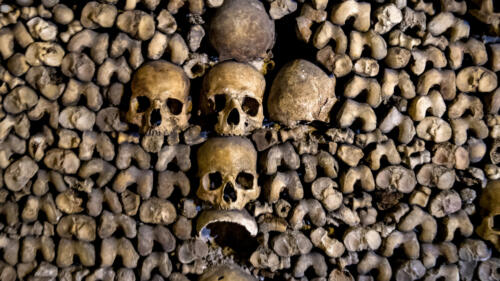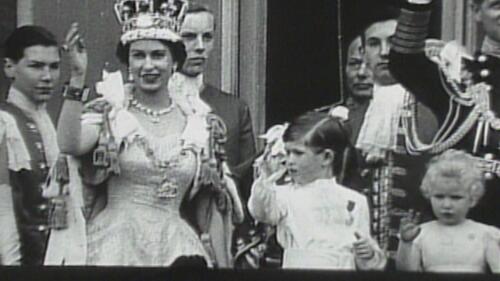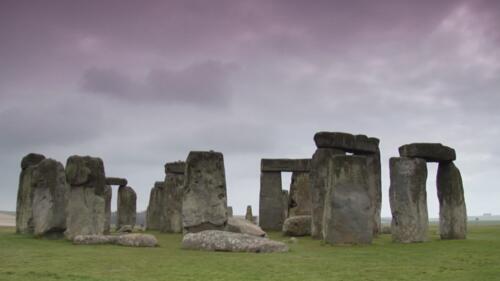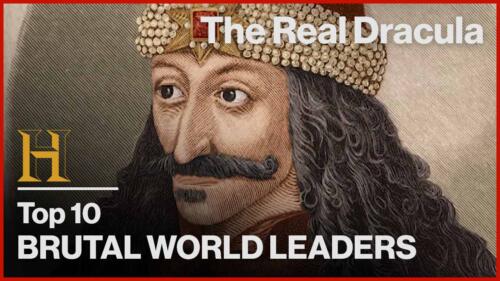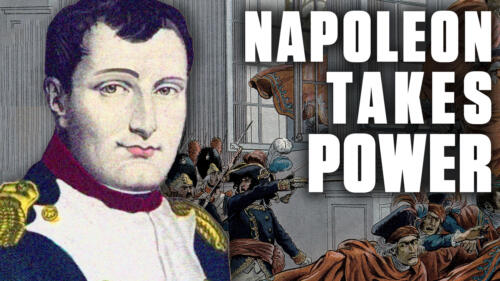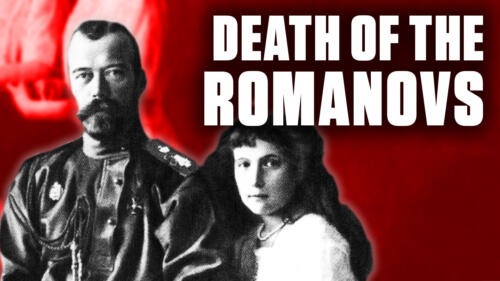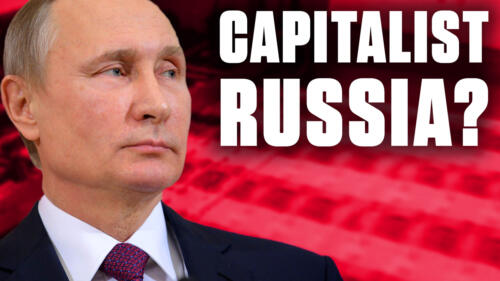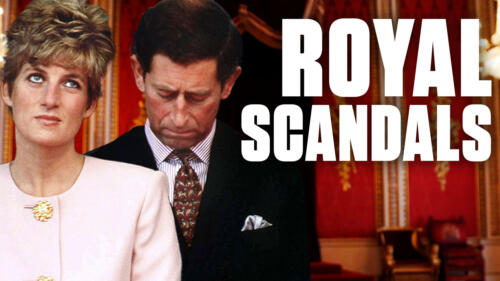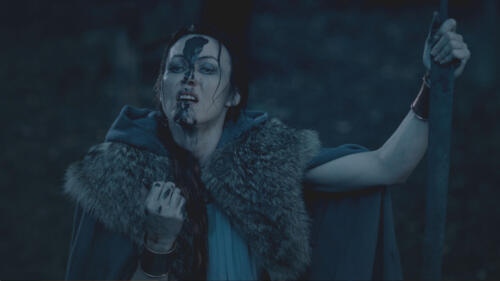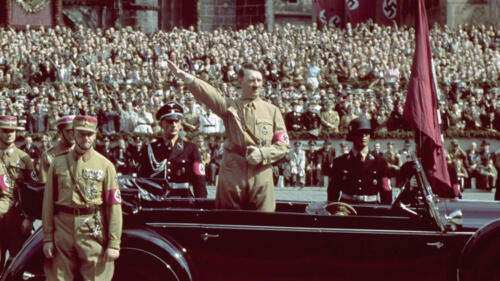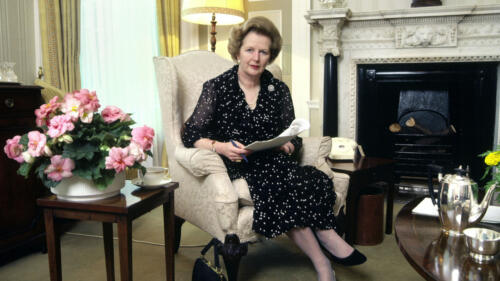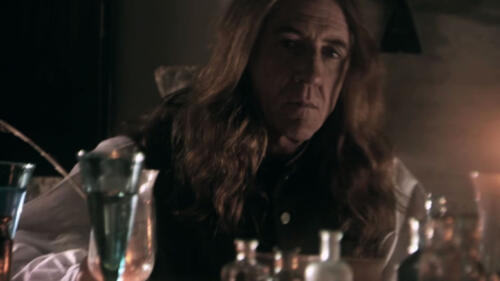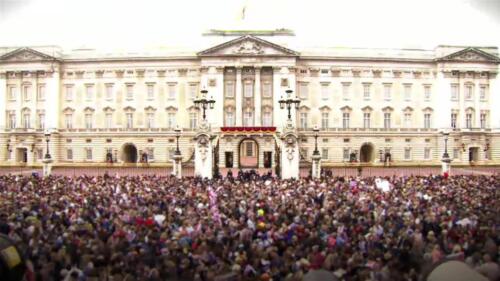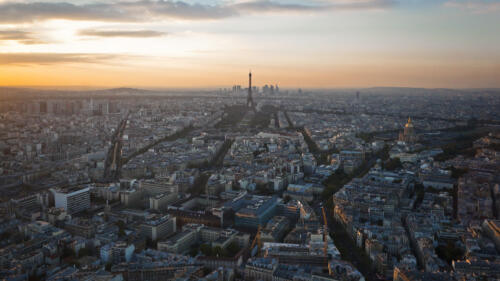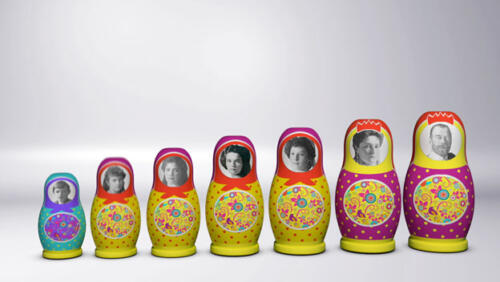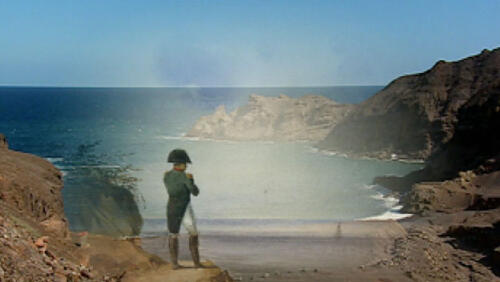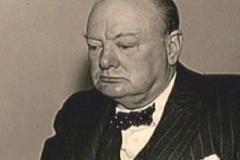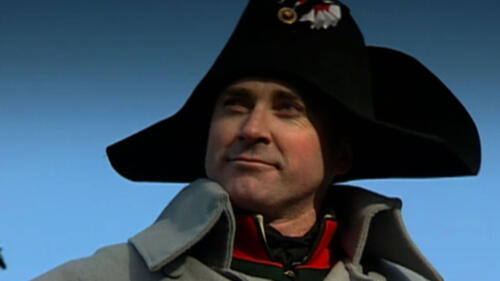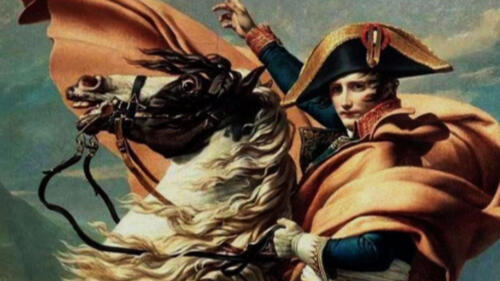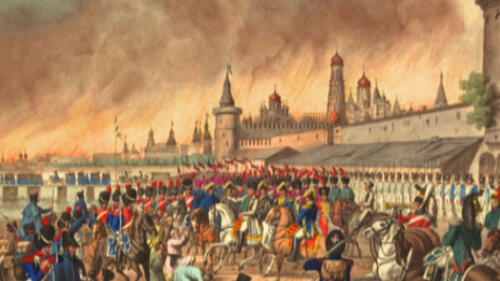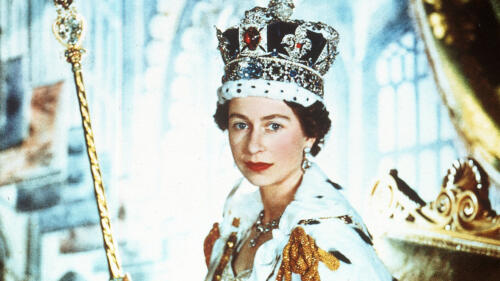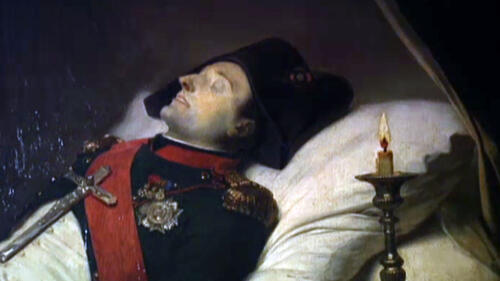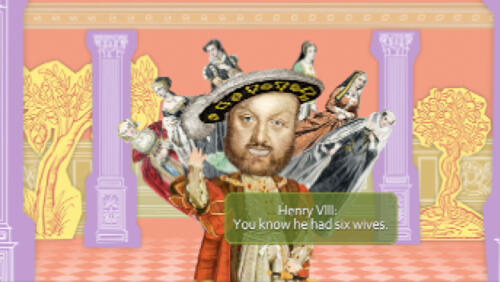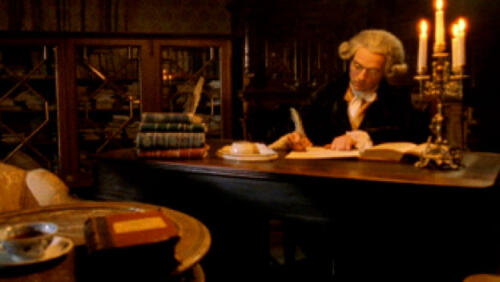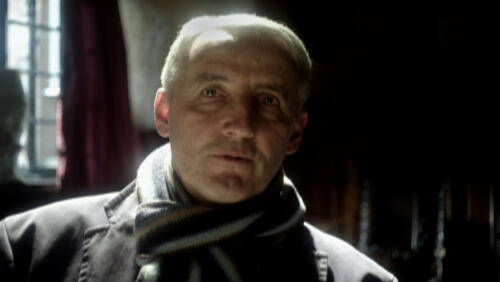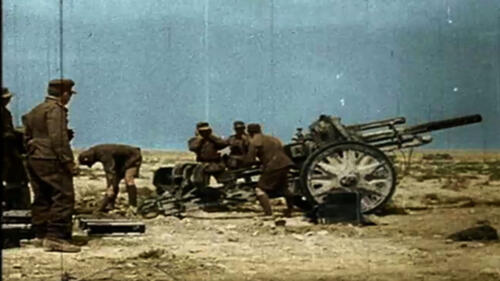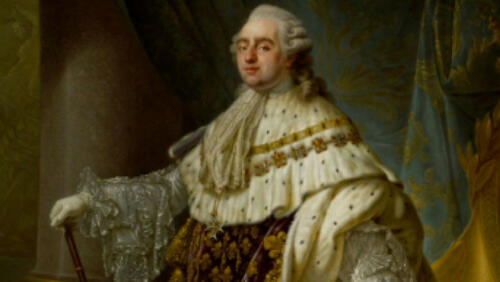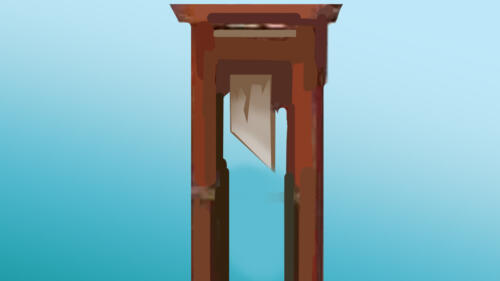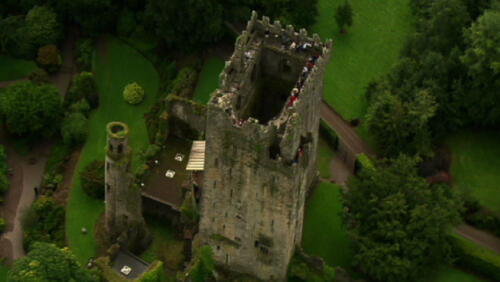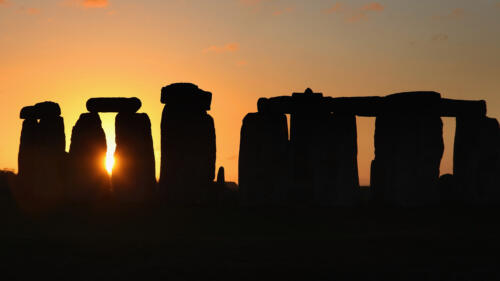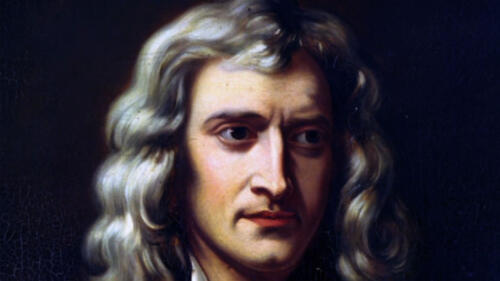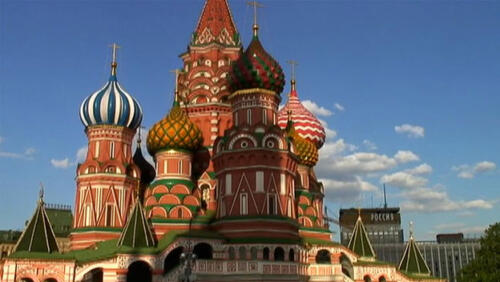European History
Explore the wars, battles, leaders, civilizations, regimes, prominent figures and major events from the continent that encompasses 2 percent of the Earth’s surface. From Stonehenge to the Great Awakening to the French Revolution to the rise and fall of Communism in Russia, discover how Europe’s often tumultuous history unfolded.
Featured Overview
Beneath the streets of Paris, France, are the bones of more than 6 million people, also known as The Paris Catacombs, in this clip from Season 3, "Sacred Bones."
3:49m watch

Illustration by Eduardo Ramón Trejo. Photos from Getty Images.
Featured Overview
Beneath the streets of Paris, France, are the bones of more than 6 million people, also known as The Paris Catacombs, in this clip from Season 3, "Sacred Bones."
3:49m watch
Start Here

The monarch’s chaotic love life led to an unstable succession, foreign policy changes and a break with Rome.

More than 35,000 volunteers from 52 countries poured into Spain to help fight fascist-backed Nationalists led by Francisco Franco.

These people played integral roles in the uprising that swept through France from 1789-1799.

The Soviet Union, founded in 1922 on Marxist-socialist principles, became one of the biggest and most powerful nations in the world—before its fall and dissolution in 1991.
Brutal Execution of the Romanovs
Brutal Execution of the Romanovs
The brutal violence of the Russian Revolution culminated in the execution of Tsar Nicholas II and his entire family, ending 300 years of Romanov rule over the Russian Empire.
5:55 watch

3 Facts About British Royal History
Explore All Related Topics

From sisters who toppled a dictator, to siblings who worked together to become first in flight, these siblings collaborated to make a difference.

The Tudor king's most trusted adviser, who ushered in the English Reformation, was known as a brilliant politician and brutal enforcer.

For high-status Vikings, a ship burial offered an extravagant path to the afterlife.
Queen Elizabeth II, the longest-reigning modern monarch in British history, redefined what it meant to be a monarch and navigated a tremendous amount of change within her family, country and world.
8:34m watch
Most of the world's holiest places sit in plain sight, able to be seen and experienced. But there are some hidden deep underground.
10:19m watch

Both are non-democratic political systems, but there are key differences between the two.

The world-famous playwright invented scores of new words and phrases. Here are 10 that have become part of the popular lexicon.

A fierce 1708 battle caused the Spanish galleon to sink—along with its $20 billion worth of gold, silver and emeralds.

Hitler’s failed 1923 coup and his short term in prison ended up helping the future dictator reset and find his path to power.

These scandals drew public fascination and scrutiny, compromising the mystique of monarchies across Europe.

The Russian Revolution was a series of uprisings from 1905 to 1917 led by peasants, laborers and Bolsheviks against the failed rule of the czarist Romanovs.

The seafaring Scandinavian warriors suffered from painful cavities and tooth abscesses. Still, their dental health was in some ways better than ours.

Learn how sinkholes and poor sanitation led to the creation of the Paris Catacombs in the late 18th century.

As their letters show, Napoleon was love-struck. Joséphine? Not so much. Yet even with affairs on both sides, a deep attachment grew—and endured.
Beneath the streets of Paris, France, are the bones of more than 6 million people, also known as The Paris Catacombs, in this clip from Season 3, "Sacred Bones."
3:49m watch

Queen Thyra was honored on engraved stones more than anyone else in Viking-Age Denmark.

Vladimir Putin took control of Russia as prime minister and president by the early 21st century, his time in power marked by invasions of Crimea and Ukraine.

The Battle of Leipzig, or the Battle of Nations, was the largest clash of the Napoleonic Wars and the first in which Napoleon was clearly defeated in the field.

On June 2, 1953, viewers around the globe watched a BBC broadcast of the coronation of 27-year-old Queen Elizabeth II. See highlights.

Armed with inexpensive tools, treasure-hunting hobbyists the world over have made some momentous and valuable finds.

The centuries-old ceremony is a mixture of political and religious rites replete in symbolism, tradition and pomp.

The Paris Commune of 1871, a government set up by revolutionaries in Paris after the collapse of the French empire, ended after two months of violence and destruction. Despite its short duration, the movement introduced concepts now considered commonplace in modern democracies, including women’s rights, worker’s rights and separation of church and state.

After his defeat at the Battle of Waterloo, the former emperor was placed in a 'wretched' home on a remote island.

The interview, in which Princess Diana talked about her struggles with mental health and her marriage, rocked the royal family and generated empathy among the public.

These people played integral roles in the uprising that swept through France from 1789-1799.

Marriage troubles for three out of her four children, humiliating press, a racy book and a fire at Windsor Castle all added to the year's misery.

Ukraine has long endured battles, with Russia’s 2022 invasion only the latest in a series of wars, rebellions, raids and pogroms to take place there.

King Charles III is the 62nd British monarch to serve over the past 1,200 years. He ascended to the throne following the death of his mother, Queen Elizabeth II.

Royal objects appearing in King Charles III's coronation are imbued with history.

The 1957 Christmas Day address humanized the monarch and acknowledged a shift in the position's role from aloof ruler to accessible figurehead.

Elizabeth reigned through tremendous change—and redefined what it meant to be a monarch.

Hitler's 1942 decision to attack the city named after the Soviet leader proved devastating and fateful.

A ravine in the Ukrainian capital Kyiv was the site of a major 'Holocaust by bullets' carried out by Nazi forces during World War II.

From the Bolsheviks' Red Terror and Stalin's Great Purge to forced hospital 'treatments,' the secret police agency—and its earlier incarnations—used consistently brutal tactics.

From Stalin's reign of terror to Gorbachev and glasnost, meet the eight leaders who presided over the USSR.

More than 35,000 volunteers from 52 countries poured into Spain to help fight fascist-backed Nationalists led by Francisco Franco.

In 1983, dozens of Irish Republican Army prisoners broke out of the 'escape-proof' Maze prison.

The grappling allegedly took place at the Field of Cloth of Gold, a royal sporting tournament designed to cement relations between England and France.

Ineffective leadership and a weak infrastructure during the war led to the demise of the Romanov dynasty.

Joseph Stalin led a uniquely brutal campaign against religion and religious leaders.

Although his roots were as royal as they come, Philip was considered a controversial choice of husband for Queen Elizabeth II.

The ancient Celts were a widespread group of tribes whose rich culture has been identified through burials, artifacts and language.

Over its thousand-year reign, the British monarchy has operated within a large set of rules—some of which have changed with the times.

James I, Charles I and Charles II of the Stuart dynasty were known for their excesses.
From Vlad the Impaler to Genghis Khan, the annals of history are filled with leaders who used fear and violence to achieve their goals. Learn about 10 of the most ruthless and cruel rulers of all time, in this episode of History Countdown.
10:12m watch

Gone are the days of absolute monarchy. Today, the ruler's duties are merely ceremonial.

The 'Iron Lady' earned her reputation for toughness when coal miners called a nationwide strike in 1984.

Revisit some of the most historic moments in the reign of Britain’s record-setting monarch.

The marriage of Prince Charles and Lady Diana unfolded like a fairytale—and the world was riveted.

The massive British corporation was founded under Queen Elizabeth I and rose to exploit overseas trade and become a dominating global player.

The German attack at Bari, dubbed ‘little Pearl Harbor,’ unknowingly hit an Allied ship full of poisonous mustard gas bombs.

They had dueling agendas—and just four days to resolve them.

To defeat Hitler, the 'Big Three' entered into a tense three-way shotgun marriage.

One prize in the Allies' race to take Berlin: the German scientists working to develop the atomic bomb.

Between 1765 and 1767, an unknown creature killed over 100 people in a rural region of France—and captivated a horrified world.

France may be famous for its culinary legacy, but the first restaurants appeared some 600 years earlier on the other side of the world.

The speculative frenzy over tulips in 17th-century Holland spawned outrageous prices for exotic flower bulbs. But accounts of the subsequent crash may be more fiction than fact.

From the Ottoman Empire to the American and French Revolutions, coffeehouses have offered a place for (sober) people to discuss new waves of thought.

The monarch’s chaotic love life led to an unstable succession, foreign policy changes and a break with Rome.

Royal brothers and sisters have squabbled through the ages—often leading to war.

Napoleon and Hitler were among those who hailed from outside the countries they ultimately ruled.

It’s a story of conquest and political union.

For four centuries, Vikings ruling from Kyiv held sway of parts of present-day Ukraine, Belarus and Russia.

The idea was to show the royal family in their day-to-day lives. The results were mixed.

A prominent cartoonist's mocking depiction of the French emperor managed to stick through the centuries.

A fledgling spy network in Tudor England used kidnappings, codes and moles to ensure the Protestant Queen's longevity.

The palace with more than 2,000 rooms featured elaborate gardens, fountains, a private zoo, roman-style baths and even 18th-century elevators.

Though the terms are often used interchangeably, socialism and communism are different in key ways.

The term “socialism” has been applied to very different economic and political systems throughout history. Common to these systems is an opposition to an unrestricted market economy and the belief that public ownership of property and natural resources will lead to better distribution of wealth and a more egalitarian society.

When Parisians stormed the Bastille in 1789 they weren't only looking for arms, they were on the hunt for more grain—to make bread.

British aristocrats often went broke after royal visits.

Blenheim Palace has been home to generations of aristocratic political leaders, and even played a role in the 2018 movie 'The Favourite.'

Pope Pius VI died in captivity, while his successor Pope Pius VII was held hostage for five years.

The now-debunked 'born criminal' theory was highly influential in criminology circles.

Filthy residences forced European monarchs to constantly move their courts.

Some of these feats of strength have yet to be surpassed.

The Irish Republican Army, also called the Provisional Irish Republican Army, was a paramilitary organization that used terror tactics, among other methods to halt British rule in Northern Ireland and bring about an independent republic for all of Ireland. A 30-year period that saw violent clashes between the IRA and other paramilitary groups and British security forces became known as The Troubles.

A monarch's mistress wasn’t just a sexual companion. Often, she influenced politics in his court—and it was no secret.

Think royal births are a spectacle now? Marie Antoinette would beg to differ.

After the Russian Revolution, the country's new leaders, looking to make some quick rubles, started selling off the dazzling imperial treasures.

Cruel efforts under Stalin to impose collectivism and tamp down Ukrainian nationalism left an estimated 3.9 million dead.

In the 1790s, anti-Christian forces all but tore down one of France’s most powerful symbols—but it survived and returned to glory.
In 1799, Napoleon Bonaparte pulled off one of the greatest political coups in history, seizing control of the French government in a matter of days – without sacrificing a single life.
4:37m watch

Russia’s history is rife with both booms and busts.

Hitler made several miscalculations ahead of the Allied invasion of Normandy—but there were still deadly German defenses in place.
The brutal violence of the Russian Revolution culminated in the execution of Tsar Nicholas II and his entire family, ending 300 years of Romanov rule over the Russian Empire.
5:55m watch

The Allied invasion of Normandy was among the largest military operations ever staged. Learn how many fighting forces took part, why it was called D-Day, stats on its planning, execution and more.

The capital of the United Kingdom has a long, rich history that stretches back to the ancient Romans.

Paparazzi photos of the princess with her lover scandalized Britain and pushed Margaret toward a historic divorce from Antony Armstrong-Jones.
As the Soviet Union fell, Russia embraced capitalism. But Russia's definition of a "free market" doesn't exactly align with other parts of the globe.
5:54m watch
Why do royal marriages fascinate us? Sometimes it's the fairytale romance, other times the pomp and circumstance. In the case of these sacred unions - it was the scandal.
5:03m watch

The ruthless power struggle in Queen Anne's court between her ladies-in-waiting Sarah Churchill and Abigail Masham had some sexual overtones.
In 2016, England voted to leave the European Union. The news shocked the world, but the split was actually a long time coming. Here's why.
4:19m watch

The Aberfan disaster wiped out a generation of Welsh schoolchildren and devastated the nation.

Sex. Money. Class. You name the inferiority complex, and this thin-skinned and deeply insecure French leader had it.

The political and economic ideology that calls for a classless, government-controlled society, surged and then receded through history.

A king gets a messy divorce, a legislator fakes his death and a defense minister defends himself with: “surely all men patronize whores?”

The casket letters were scandalous. But were they really written by Mary Stuart?

Why Queen Elizabeth I signed a death warrant to execute the rival royal cousin she'd never met.

The Diamond Necklace Affair reads like a fictional farce, but it was all true—and would become the final straw that led to demands for the queen's head.

After the French Revolution, eight-year-old Louis XVII was taken to prison and never seen in public again.

Rivals of Russia's powerful empress invented endless sexual myths—including nymphomania, voyeurism and bestiality—that depicted her as having a voracious carnal appetite.

Four hundred years ago, one of England's famous explorers fell lethally out of favor.

Right-wing paramilitary groups killed political foes with no repercussions in Weimar Germany.

The imperial family fell out of favor with the Russian public long before their execution by Bolsheviks in July 1918.

She did burn hundreds of Protestants at the stake, but also history, as they say, is written by the victors.

Once titled "defender" of the Catholic church, Henry's personal circumstances would drive him to break his Catholic ties and found the Church of England.

Missing remains and a Bolshevik cover-up after the brutal execution of the imperial family fueled wild rumors.

The execution ballads about the last queen of France spread myths about her that most people still believe.

Czar Nicholas II’s immediate family was executed in 1918. But there are still living descendants with royal claims to the Romanov name.

Moscow's aggressive reaction to its long-simmering tensions with the former Soviet republic signaled a newly assertive Russia.

From the tumultuous 'Troubles' to a series of royal scandals, Queen Elizabeth II steered the commonwealth through tremendous change.

Even after suffering a stroke, Lenin fought Stalin from the isolation of his bed. Especially after Stalin insulted his wife.

Nicholas' five children were shot, bludgeoned, stabbed and then shot again. Could the Romanovs' many royal relatives across Europe have helped prevent the slaughter?

After Waterloo, the French emperor tried, unsuccessfully, to flee to the U.S. But his Bonaparte relations made quite an invasion.

The peninsula has long loomed large for Russian and Soviet leaders.

Americans love to love Harrods and all thing royal. But when it comes to the power dynamic of the transatlantic alliance, the U.S. is decidedly less sentimental, says British historian Max Hastings.

Both leaders knew the Allies must invade Normandy, but faced many obstacles before carrying out Operation Overlord.

Queen Elizabeth II served from 1952 to 2022 as reigning monarch of the United Kingdom. She was the longest-reigning monarch in British history.

A tremendous amount of effort goes into planning a royal wedding.

Victoria's meddling in the love lives of her grandchildren helped create—and destroy—modern Europe.

These striking images changed how rulers were seen—and not always for the better.

European royals did not trust the portraits sent to them by other courts, so they commissioned their own.

According to some historians, Britain had a black queen in the 18th century: Charlotte of Mecklenburg-Strelitz.

The royal family's distaste for divorce goes back to Henry VIII.

The Spanish Armada was a large naval fleet sent by Spain in 1588 to invade England. Outmaneuvered and outgunned, the Spanish Armada was defeated.

Stalin didn’t have Photoshop—but that didn’t keep him from wiping the traces of his enemies from the history books. Even the famous photo of Soviet soldiers raising their flag after the Battle of Berlin was altered.

Found guilty of charges including adultery, incest and conspiracy against the king, on May 19, 1536 Anne Boleyn was beheaded by a French swordsman.

Claims that the British monarch was descended from the Prophet Muhammad may reveal more about modern perceptions of Islam than the queen.

The Reichstag Fire, a 1933 arson attack on the parliament building in Berlin, was used by Adolf Hitler as an excuse to seize absolute power in Germany.

The Gulag, a brutal system of forced labor camps, was first established in 1919 and grew under Joseph Stalin’s reign as communist dictator of the Soviet Union.

Huguenots, and particularly French Huguenots, were persecuted Protestants in 16th and 17th century Europe who followed the teachings of theologian John Calvin.

The Great Terror of 1937, also known as the Great Purge, was a deadly political campaign led by Joseph Stalin to eliminate dissent in 1930s Soviet Union.

As rain poured down, conflicts between Mary Shelley and her fellow vacationers reached a boiling point.

The Great Awakening was a religious revival in the English colonies of America that emphasized themes of sin and salvation and a personal approach to faith.

The English Bill of Rights, signed into law in 1689 by William III and Mary II, outlined specific civil rights and gave Parliament power over the monarchy.

The KGB was the primary security and intelligence agency for the Soviet Union from 1954 until the nation collapsed in 1991, when the FSB replaced the KGB.

The French emperor escaped his island prison in plain sight.

While serving in the KGB in East Berlin, Putin was shocked and humiliated to experience the collapse of Soviet power firsthand.

The Glorious Revolution of 1688 overthrew English Catholic king James II, who was replaced by his Protestant daughter Mary and her husband William of Orange.

The Church of England, or Anglican Church, is the primary state church in Great Britain and is considered the original church of the Anglican Communion.

Pogroms typically refer to the tolerated acts of violence orchestrated against Jewish people in Russia and eastern Europe in the 19th and early 20th centuries.

Inside the unhappy reign of Sisi, Empress of Austria and Queen of Hungary.

Crawfie’s revelations titillated a nation—but she paid the price.

In marriage and divorce, the strong-willed princess helped modernize royal love.

During the course of their 57-year-long marriage, Clementine Churchill repeatedly supported her husband through trying political and personal times.

The Weimar Republic was Germany’s unstable government from 1919 to 1933, an economically chaotic period after World War I until the rise of Nazi Germany.

The Celts were a collection of tribes that may have evolved as early as 1200 B.C. before spreading their religious beliefs and traditions across western Europe.

The family tree of Prince Harry's fiancé is getting a lot of attention.

The concept of a third world war has been around for a long time—not as something that might happen, but something that <em>will</em>.

The Romanov family, the last dynasty to rule the Russian Empire, saw their rule end when the entire family was killed in 1918 in the Russian Revolution.

The Soviet Union, or U.S.S.R., was made up of 15 countries in Eastern Europe and Asia and lasted from 1922 until its fall in 1991. The Soviet Union was the world’s first Marxist-Communist state and was one of the biggest and most powerful nations in the world.

Scientists still can't figure out the cause of the Tudor-era "sweating sickness."

Agnes Marshall’s high-concept recipes put modern chefs to shame.

British Parliament - the House of Lords and the House of Commons - is the legislative body of the United Kingdom and meets in the Palace of Westminster.

Abdication is the formal act of giving up authority as the ruling monarch of a sovereign nation, as Edward VIII of Great Britain famously did in 1936.

Princess Diana (1961-1997)—Britain’s beloved “People’s Princess”—devoted herself to charitable causes and became a global icon before dying in a car accident in Paris in 1997. Her death sparked worldwide mourning.

Royal succession, or the transition of power from one ruler to the next, is based on rules like primogeniture for the United Kingdom and other monarchies.

Bastille Day is a holiday celebrating the storming of the Bastille—a military fortress and prison—on July 14, 1789, in a violent uprising that helped usher in the French Revolution.

Queen Victoria’s 63-year reign on the British throne would have been considerably shorter had any one of eight assassination attempts succeeded.

While Prince Philip did not have a role in Queen Elizabeth's official duties, he provided vital, continuous support.

Prince Albert Victor, the grandson of Queen Victoria, became second in line to the British throne at the time of his birth in 1864. However, Eddy, as he was nicknamed, died at age 28, before his father and grandmother, and never became king. Since his death, there have been unsubstantiated claims that the prince was […]

Even as his Nazi regime was exterminating millions in the gas chambers, Adolf Hitler resisted calls to use the deadly nerve agent against his military adversaries.

There was a lot more to the 'People's Princess' than the public ever saw.

The often-rocky relationship between Britain and the European Union stretches back nearly half a century.

A computer analysis of the British monarch's writing supports the long-held belief that he suffered from a mental illness.
Get the facts about Russian President Vladimir Putin and his rise to power.
2:09m watch

On the centennial of the start of the Russian Revolution, explore about the tumultuous events of 1917 as witnessed by Americans and other expatriates living in the capital

Cold War America scored a major PR coup when the only daughter of Soviet dictator Joseph Stalin defected to the United States.

Bear-baiting, dog fights and gladiatorial combat involving chimps were just a few of the popular—and grisly—animal blood sports in 16th and 17th century England.

Big Ben is one of the most iconic—and misidentified—landmarks in the world. The name initially referred not to the distinctive 320-foot-high clock tower on the north side of the British Houses of Parliament, renamed the Elizabeth Tower in honor of Queen Elizabeth II during her diamond jubilee in 2012, but to the enormous 13-ton bell […]

Dynamite inventor Alfred Nobel never explained why he created the Nobel Prizes in his 1895 will, but he may have been inspired by reading an unflattering obituary—his own.

Less than two years before the Soviet Union faced off against Nazi Germany during World War II, it waged a bloody war with another adversary: the tiny nation of Finland. Russia’s feud with its Nordic neighbor began in 1939, when Soviet leader Joseph Stalin looked to expand his influence over Eastern Europe. Citing concerns about […]

Although it may sound like a stale tea-time pastry, the Stone of Scone is an ancient symbol of Scottish sovereignty. According to legend, the sandstone slab was used by the biblical figure Jacob as a pillow when he dreamed of a ladder reaching to heaven and then brought to Scotland by way of Egypt, Spain […]

A new book details 25-year-old Winston Churchill’s exploits in the Boer War and his dramatic escape from a prisoner-of-war camp that made him a British hero.

Take a look back at six of the most infamous outbreaks of the disease once known as the “Great Mortality.”

Get the facts behind a secret meeting between Roosevelt and Churchill that produced a cornerstone of the post-war world order.

Explore seven fascinating facts about this bloody prelude to World War II.

As Theresa May takes over from David Cameron as British prime minister, learn more about the surprising history of her new home—10 Downing Street.

It was the Napoleonic Wars that truly sealed Switzerland's neutral stance.

Even as millions of Nazi troops massed on his border, Soviet leader Joseph Stalin remained convinced that Adolf Hitler wouldn’t betray him.
Celtic queen Boudica avenges her brutal humiliation at the hands of the Romans with a merciless campaign of fire and blood in this web exclusive.
5:16m watch

Known as “Flagellum Dei,” or “scourge of God,” Attila the Hun was one of the most fearsome enemies the Romans ever faced.

The Goths and the Vandals were two of the Germanic groups that clashed with the Roman Empire throughout Europe and North Africa from the third to the fifth centuries A.D. Because nearly all of the surviving information about the Goths and Vandals comes from Roman sources, history has taken a largely negative view of these […]

In the waning centuries of the Roman Empire, these fierce warrior leaders tested their mettle in brutal clashes with the Romans, and with each other.

Explore key facts about one of the 19th century’s most devastating wars.

Starting with Napoleon, meet five leaders who initiated coups d’état to rise to the top.

Get the facts on the turbulent life of this Tudor monarch—England's first queen regnant.
Take a look at the life and impact of Adolf Hitler, who as leader of the Third Reich orchestrated the the death of 6 million Jews, in this video.
4:55m watch
Take a look at the life of one of the most celebrated authors of all time, legendary wordsmith William Shakespeare, in this video.
4:43m watch
Learn about the life and political career of the UK's first female prime minister, "Iron Lady" Margaret Thatcher, in this video.
3:24m watch

Pick any day in the Piazza del Duomo in the Italian city of Pisa, and you will undoubtedly spot a bunch of tourists posing for the same photo: hands outstretched towards the cathedral’s conspicuously tilting bell tower, as if they are supporting it with their sheer strength. The so-called Leaning Tower of Pisa is one […]

Explore nine key facts about the most famous battle of the Hundred Years’ War.

Check out 10 surprising facts about the first female British prime minister.

The definition of blackmail—the act of demanding that a person pay money or do something in order to avoid having damaging information about him or her exposed—has evolved over time. The word’s origins are linked to the chieftains in the border region between England and Scotland in the 16th century and part of the 17th […]

In a recent British poll, a group of historical writers chose Henry VIII as the worst monarch in history. Was he really that bad?

On the anniversary of his death, get the facts on the so-called Sun King.

Get the facts on the iconic ancient monument, including how it once ended up on the auction block and what the wizard Merlin and Charles Darwin have to do with it.

Read about the tale of deceit, betrayal and a pickaxe-wielding secret agent behind Leon Trotsky’s assassination.

Nothing has been found documenting the composition of the more than 36 plays and 154 sonnets attributed to the Bard.

The original dye was prized because of supply and demand: It came from the mucous of an exceedingly rare sea snail shell.

Explore some well-known “facts” about the French Revolution—some of which may not be so factual after all.

Take a look back at the uprising that helped inspire the Russian Revolution.

Explore seven surprising facts about one of the most significant battles in European history.

During the reign of King Louis XIV, an enigmatic man spent several decades confined to the Bastille and other French prisons. Who was he?

Explore nine key facts about the bloody feud that permanently altered the course of British history.

Kiss me, I'm Irish?

On the anniversary of Churchill’s funeral, look back at the day when Great Britain said farewell to the man who defended the country from the Nazis in World War II.

A monarch of outsized proportions, passions and appetites, King Henry VIII (1491-1547) ruled England for 36 years.

The concept of modern policing has its roots in pre-Victorian England, when the British home minister, Sir Robert Peel (1778-1850), oversaw the creation of London’s first organized police force. Before Peel’s 1829 reforms, public order had been maintained by a mix of night watchmen, local constables and red-coat-wearing army soldiers, who were deployed as much […]

Learn 10 things you may not know about one of the 18th century’s most quotable and controversial thinkers.

The idea of an unhinged monarch has inspired fascination—and controversy—for as long as there have been human rulers.

Many consider it history’s most celebrated cavalry charge. And one of history's biggest military blunders.

Learn eight surprising facts about the execution device once dubbed the “National Razor” of France.

The Nazis and Soviets were mortal enemies. Why did they sign a nonaggression pact—and why didn't it last?

On Bastille Day, look back at the jailbreak that kick-started the French Revolution.

Going back to ancient history, some of the world’s most feared fighting forces were made up of freelance warriors who weren’t aligned with any particular nation or king. Get the facts on six of history’s most infamous and influential private armies.

Six fascinating facts about the Great Charter's story and its significance.

There are many advantages and responsibilities that come with being the reigning monarch of England, but one surprising perk is getting two birthdays each year. This year Saturday, June 11 marks the Queen’s official birthday, and will be celebrated around the Commonwealth. However, Elizabeth II was actually born on April 21. The British monarch’s official […]
In this scene, Winston Churchill becomes Great Britain's new prime minister.
1:16m watch

Explore eight facts about the brutal and often overlooked Russian front of World War II.

A quarter-century before boldly leading Britain in World War II, Winston Churchill spearheaded a World War I military debacle—Gallipoli.

Discover six illuminating facts about the ostentatious French emperor.

10 surprising facts about the British wartime leader.

If you’ve ever had a career in the arts, or know someone who has, you are likely aware that saying the word “Macbeth” inside a theatre is strictly taboo unless one is rehearsing or in the midst of performing Shakespeare’s dark tragedy. Doing so is almost universally believed to bring about bad luck or even […]

From colossal Prussians and delirious Vikings to a faith-based U.S. Army unit, find out more about seven of history’s most unconventional military outfits.

A new study of Stonehenge’s smaller rocks pinpoints their exact source, raising questions about how they may have been transported to the monument’s site.

Take a closer look at the world’s first communist head of state.

Check out nine surprising facts about the former queen of France.

It's almost 120 times smaller than Manhattan.

Explore fascinating facts about the life and legacy of England’s famous and mysterious Bard.

The arrival of Prince Harry and Meghan Markle's first child was historic for Britain—but royal births, and the many traditions that surround them, have been an object of fascination for centuries.

Here are five things you may not know about the iconic monarch.

History is filled with examples of ambitious swindlers who took on the identities of kings, queens and other royals. Find out more about seven royal impostors who managed to con their way into the history books.

Don’t let the lace doilies and lavender sachets fool you—life for women in Victorian England wasn’t always how we imagine it.

Explore 10 facts about one of European history’s most influential rulers.

Meet four popes who abdicated their position as head of the Catholic Church.
The introduction of the scientific method transformed society by using science and reason rather than political or religious dogma to explain natural phenomena.
2:54m watch

It’s one of the most famous quotes in history. But is it true?

In the early morning hours of July 17, 1918, Czar Nicholas II—the last monarch of the Romanov dynasty, which ruled Russia for 304 years—was reportedly executed along with his wife, Alexandra, and their five children by their Bolshevik captors in the basement of a house in Yekaterinburg. No bodies were immediately found, however, and rumors flew […]

Find out about six young rulers whose actions and decisions had very grown-up consequences.

Explore the history of the Gregorian calendar, which Britain and its colonies adopted in 1582.

Find out about six prominent captives who did time in one of history’s most forbidding prisons.

The Russian ruler was mostly known for modernizing her country—and for her long string of palace lovers. The horse? That was a myth.

The French emperor—intent on conquering Europe—sent 600,000 troops into Russia. Six disastrous months later, only an estimated 100,000 made it out.
Did you know that Buckingham Palace has a helipad and a lake? Get the facts and history behind the Queen's official London residence.
2:46m watch

As the United Kingdom celebrates the 60-year reign of Queen Elizabeth II, take a look back at the country’s last Diamond Jubilee—Queen Victoria’s in 1897.

Explore the extraordinary life and reign of Queen Elizabeth II, the UK's longest-serving monarch.
In a This Day in History video, learn that on July 8, 1960, United States pilot Gary Powers was charged with espionage by the Soviet Union. At the height of the Cold War, Powers was cruising over Russia in his U-2, a flying spy-plane, when shot down. The U.S. government tried to dismiss the charge, but Nikita Kruschef had the U-2 confirming that Powers was a spy. President Eisenhower was forced to publically justify the surveillance and Powers was sentenced to ten years in prison, but was swapped two years later for a high-ranking Soviet spy.
Did the Romanovs survive? Get the full story.
2:36m watch
The remote island of St. Helena becomes a prison for the once powerful Napoleon Bonaparte.
2:45m watch
During World War II, a secret network of tunnels was built under London to keep Churchill's communications lines intact.
3:47m watch
Napoleon's battlefield strategy at Austerlitz results in one of his greatest victories.
3:32m watch
Napoleon's unique genius for strategy allows him to outmaneuver Russian and Austrian forces marching across Europe to confront his troops.
3:45m watch
In the wake of the French Revolution, a young Napoleon Bonaparte begins a meteoric rise to power.
1:54m watch
When Napoleon invades Russia in 1812, an unexpected adversary brings ruin to his troops.
4:20m watch
On Coronation Day, a glittering spectacle in London is witnesses by millions. Through the gates of Buckingham Palace rolls the ornate golden coach of state carrying a beautiful and radiant girl of twenty-seven years to her coronation.
3:10m watch
Napoleon's death in exile on St. Helena is an event surrounded by accusations of conspiracy.
3:35m watch
You know he had six wives, but there was a lot more to this famous king.
2:04m watch
Robespierre's Reign of Terror reinvigorates the French Revolution but ends in as bloody a fashion as it began.
3:40m watch
Is the legend of Robin Hood and his merry men just a myth, or did the outlaw of Nottingham really exist?
3:16m watch
After Italy declares war, the Allies fight the Axis powers in North Africa for control of the Mediterranean.
1:42m watch
King Louis XVI and the French nobility face a revolution of the Third Estate.
3:38m watch
See why this device was a preferred form of legal execution.
4:06m watch
From Ireland's national symbol to its average beer consumption, get the facts on the Emerald Isle.
2:21m watch
How and why did prehistoric man build the massive stone structures?
3:40m watch
The Protestant Reformation encourages both religious and scientific thought.
2:47m watch
The guillotine, the notorious killing machine of the French Revolution, was used to behead thousands, including King Louis XVI and Marie-Antoinette. Why was it a humane form of execution for its time, and did victims' brains continue functioning after decapitation?
3:16m watch
Ivan the Terrible built St. Basil's Cathedral after conquering Kazan and expanding the Russian empire.
2:26m watch

While the guillotine became known as a ruthlessly efficient killing machine, its eponym was actually motivated by humanitarian impulses.

Written in the 1920s and rediscovered in 2008, memoirs supposedly written by the real Jack the Ripper were published today.

William Shakespeare (1564-1616), considered the greatest English-speaking writer in history and England’s national poet, has had more theatrical works performed than any other playwright.

Reports have long circulated that legendary outlaws Butch Cassidy and D.B. Cooper and entertainers Elvis Presley and Andy Kaufman survived long after their alleged deaths. Find out more about these claims and other famous people rumored to have lived on for years in obscurity.

Red Square, built directly east of the Kremlin in Moscow, is known for its distinctive landmarks and demonstrations designed to showcase Russian strength.

Biological factors may have caused Henry VIII's madness and reproductive woes, new research suggests.

Was Scottish knight William Wallace of "Braveheart" fame the inspiration behind the legend of Robin Hood?

Stonehenge is a prehistoric display of dozens of massive stones in a circular layout. Historians have puzzled over the many mysteries of the English monument.

Stories about a merrymaking English outlaw go as far back as the 14th century, although it's unclear whether Robin Hood ever existed in the real world.

The Magna Carta (or Great Charter) was written in Latin and was effectively the first written constitution in European history. It established the principle of respecting the law, limiting government power and protecting human rights.

Otto von Bismarck (1815-1898)—also known as the “Iron Chancellor”—was Chancellor of the newly-united German Empire from 1862 to 1890. During his tenure he modernized the nation and helped set the stage for World War I.

Herbert Henry Asquith was a British Liberal leader who introduced reforms as prime minister and spurred the democratization of the British political system.

Enlightenment was a movement of politics, philosophy, science and communications in Europe during the 19th century.

Louis XIV, the Sun King, ruled France for 72 years. He built the opulent palace of Versailles, but his wars and the Edict of Nantes left France drained and weak.

The English Civil Wars (1642-1651) stemmed from conflict between King Charles I and Parliament over an Irish insurrection. The wars ended with the Parliamentarian victory at the Battle of Worcester.

Joseph Stalin was the dictator of the Soviet Union from 1929 to 1953. Through terror, murder, brutality and mass imprisonment, he modernized the Soviet economy.

The Seven Years’ War, or French and Indian War, was a global conflict lasting from 1756 to 1763. Battles occurred on both the European and North American continents.

Vladimir Lenin was a Russian communist revolutionary and head of the Bolshevik Party who was leader of the Soviet Union after the Russian Revolution of 1917.

Queen Victoria ruled the British Empire for nearly 64 years, after ascending the throne just weeks after turning 18. While short in stature, Victoria was a giant in shaping the modern monarchy, leaving her mark on what has come to be called the Victorian Era.

The Battle of Trafalgar, fought off the coast of Spain in 1805, was a pivotal moment in the Napoleonic wars that established England as a dominant naval power.

Causes of the Thirty Years’ War With Emperor Ferdinand II’s ascension to head of state of the Holy Roman Empire in 1619, religious conflict began to foment. One of Ferdinand II’s first actions was to force citizens of the empire to adhere to Roman Catho...

The Wars of the Roses were a series of bloody battles waged between the House of York and the House of Lancaster in the 15th century for the throne of England.

Raymond Poincaré guided France through World War I as president and undertook dramatic measures to stablize the country's economy as prime minister.

Oliver Cromwell was an English soldier and statesman. The Puritan organized armed forces in the English Civil Wars and twice served as Lord Protector.

Margaret Thatcher, known as the Iron Lady, reduced the influence of trade unions and privatized industries as the United Kingdom's first female prime minister.

Marie Antoinette was queen of France during a time of increasing hostility toward the monarchy, until she was executed in 1793 during the French Revolution.

Mary I became England's first female monarch in 1553. She was known as Bloody Mary for burning nearly 300 Protestants at the stake during her short reign.

Nostradamus was a French astrologer and physician whose mysterious books of prophecies and predictions earned him fame and a loyal—and controversial—following during the 1500s.

Napoleon Bonaparte (1769-1821), also known as Napoleon I, was a French military leader and emperor who conquered much of Europe in the early 19th century. After seizing political power in France in a 1799 coup d’état, he crowned himself emperor in 1804.

Karl Marx (1818-1883) was a German philosopher and economist who became a social revolutionary as co-author of "The Communist Manifesto."

The English philosopher and political theorist John Locke (1632-1704) laid much of the groundwork for the Enlightenment and made central contributions to the development of liberalism. Trained in medicine, he was a key advocate of the empirical approaches of the Scientific Revolution.

Henry VIII, king of England for 36 years, was a leader of the Reformation. He had six wives, including Catherine of Aragon, Anne Boleyn, Anne of Cleves and Jane Seymour.
!['Henry V', 1935. Henry (1387-1422), King of England (1413-1422), son of Henry IV by Mary de Bohun, was born at Monmouth, Wales. From Kings & Queens of England - A Series of 50. [John Player & Sons, London, 1935] Artist Unknown.](https://res.cloudinary.com/aenetworks/image/upload/c_fill,ar_1.7777777777777777,w_640,h_360,g_auto/dpr_auto/f_auto/q_auto:eco/v1/henry-v-gettyimages-973900962?_a=BAVAZGDX0)
One of the most renowned kings in English history, Henry V (1387-1422) led two successful invasions of France, cheering his outnumbered troops to victory at the 1415 Battle of Agincourt and eventually securing full control of the French throne.

The Battle of Hastings in 1066 was a battle between English forces and William the Conqueror. After William won, the Norman Conquest of England was secured.

The Gunpowder Plot was a failed attempt by Guy Fawkes, Robert Catesby and others to blow up England’s King James I and the British Parliament on November 5, 1605.

During his 59-year reign, King George III led Britain to victory in the Seven Years’ War, successfully resisted Revolutionary and Napoleonic France, and presided over the loss of the American Revolution. He spent his last decade in a fog of insanity and blindness.

The French Revolution began in 1789. Soon, the Bastille was stormed and the monarchy eliminated. After the Reign of Terror, France established a new government.

Frederick II (1712-1786) ruled Prussia from 1740 until his death, leading his nation through multiple wars with Austria and its allies. His daring military tactics expanded and consolidated Prussian lands, while his domestic policies transformed his kingdom into a modern state and formidable European power.

Elizabeth I, known as the Virgin Queen for her refusal to marry, oversaw a period of artistic and military achievements during her reign as England's monarch.

Eleanor of Aquitaine (1137-1152) was one of the most powerful and influential figures of the Middle Ages. Inheriting a vast estate at the age of 15 made her the most sought-after bride of her generation. She eventually became the queen of France, the queen of England and she led a crusade to the Holy Land.

Boris Yeltsin was the president of Russia from 1991 until 1999. Despite ushering in a freer society, his tenure was marred by economic hardship and corruption.

The Easter Rising was a week-long insurrection against British rule in Ireland in April 1916 that spurred the eventual formation of the Irish Free State.

The Crimean War (1853-1856) stemmed from Russia’s threat to multiple European interests with its pressure of Turkey. After demanding Russian evacuation of the Danubian Principalities, British and French forces laid siege to the city of Sevastopol in 1854. The war, which ended in defeat for Russia, altered the balance of power in Europe and set the stage for World War I.

The Battle of Crécy, falling early in the Hundred Years’ War, brought a decisive victory for the longbow-wielding English army over French forces in Normandy.

Alfred Dreyfus, a Jewish military captain, was convicted of treason in a case that exposed religious and political divides at the turn of 20th century France.

Alexis de Tocqueville (1805-1859) was a French sociologist and political theorist who traveled to the United States to study its prisons and wrote “Democracy in America” (1835), one of the most influential books of the 19th century.

The Beer Hall Putsch, staged in Munich in 1923, was failed attempt at a government takeover that propelled Adolf Hitler to national prominence in Germany.

The Battle of Waterloo was a humiliating defeat for Napoleon, crushing his imperial dreams of ruling Europe and bringing the bloody Napoleonic Wars to a final end.

Bernard Law Montgomery was a decorated British military commander who spurred Allied victories at the Second Battle of El Alamein and D-Day during World War II.

The Battle of Agincourt, held in northern France in October 1415, brought a decisive victory for the forces of England's Henry V over a far larger French army.

The Battle of Dien Bien Phu, fought from March 13 to May 7, 1954, was a decisive Vietnamese military victory that brought an end to French colonial rule in Vietnam.

Winston Churchill, prime minister of Great Britain from 1940 to 1945, he led the country through World War II, and from 1951 to 1955. He is considered one of the best-known, and some say one of the greatest, statesmen of the 20th century.
